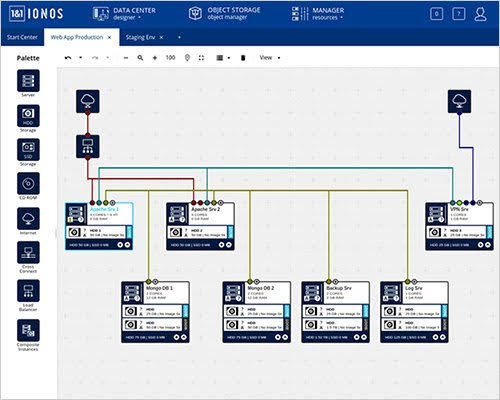Digitalisation for SMEs
Rising to the challenges presented by digital modernization.
The tasks facing system houses, integrators & managed service providers
How the cloud is transforming traditional system houses — digitalization is impossible without the public cloud.
The challenges for companies on their road to digital maturity
What companies should consider when taking their first steps into the cloud.
System houses and software integrators in the digital transformation
IT is a crucial factor within digitalization. “On-premises only” no longer makes the grade. Even now, the public cloud is an integral part of modern IT strategies. The cloud is growing inexorably while traditional IT structures are bursting at the seams — for cost reasons and also due to the technical requirements of an increasingly agile market. Barely any companies want or are able to implement their multi-cloud strategy without external partners. So what roles and skills do the managed public cloud providers (MPCP) offer in this context?
Hot off the press, IONOS presents the Crisp Research AG strategy paper “System houses and software integrators in the digital transformation.”
CRISP strategy paper “System House 4.0 — system houses and software integrators in the digital transformation”
Exclusively for you:
- Learn how system houses and software integrators — as managed public cloud providers and within System House 4.0 — rise to the challenges of the digital transformation and how you can benefit from the cloud competency of a System House 4.0.
- Find out more about new trends and market statistics on cloud computing in Germany, as well as the importance of multi-clouds to diversify your cloud strategy.
- Learn how partnering with managed public cloud providers can help expand your cloud expertise and develop your cloud continuously.

Cloud-based digitalization
The digital transformation of entire industries offers significant opportunities to companies in Germany, but comes with a number of challenges as well. Fresh business models and new ways of creating value are evolving around the use and exploitation of accumulated digital data. But it is equally necessary to make decisions on how to tackle digitalization from an operational perspective, on which budgets will be necessary and how the volumes of data can be processed, as well as on how this can be managed technically and in compliance with data protection legislation.
What you need to consider on the road to digitalization
Data privacy: data processing, data storage, and security standards in the cloud need to comply with the same rules as physical infrastructures.
Data security: safeguarding cloud operations against system failure and force majeure.
Compliance: aligning system and business processes with the requirements of digitalization.
Identification of the status quo: agility of the company, scalability and security of its systems.
Definition of your requirements: cost and resource savings, benchmarking with the competition.
Clear communication of your digitalization objectives: project plan, resource availability, parallel systems.
Inclusion of everyone involved in the planning and decision-making process: change management, documentation, training.
Clarification of roles and responsibilities: personnel resources.
Digitalization with the IONOS Compute Engine
A rule of thumb: a strong and reliable cloud provider is the best foundation for managing the digital transformation. They will create a dependable basis for IT workloads — whether on their own or in cooperation with a technology partner who offers support and 24/7 availability. The Compute Engine all the boxes with its unique and patented Data Center Designer concept, the DCD for short. Our DCD lets you replicate to the greatest possible extent the familiar process of building and managing a physical data center, but in this case it’s a virtual one that does not require wiring or other laborious processes. The DCD visualizes the entire design and handling process just like diagrams on a whiteboard. Individual elements are assembled and connected effortlessly via drag and drop. It’s probably the most intuitive way to configure a data center and its infrastructure.

More information about SME digitalization
White Paper: Digitalization with IaaS cloud computing
Companies need to adapt to digitalization incrementally and in doing so plan each definite stage. The white paper shows you what companies need to consider especially as they evolve toward digital maturity and how digitalization can be implemented successfully in individual projects (includes a checklist).
Crisp Strategy Paper: Cloud infrastructure
Cloud computing as a guarantee for future-proof IT. Learn here what the latest performance specs of a digital infrastructure look like, which questions CIOs and companies should currently be asking, and how you can step successfully into the cloud.